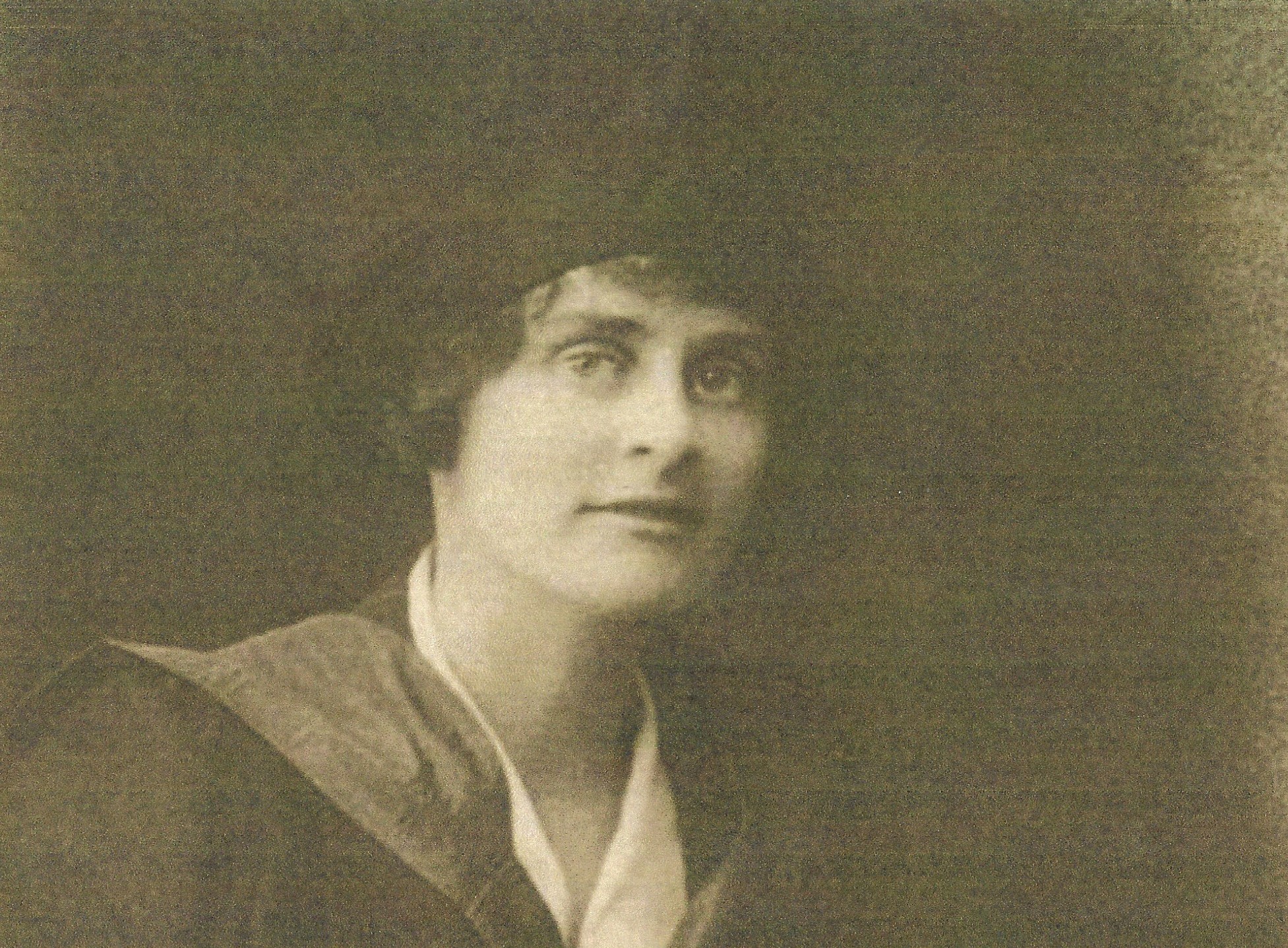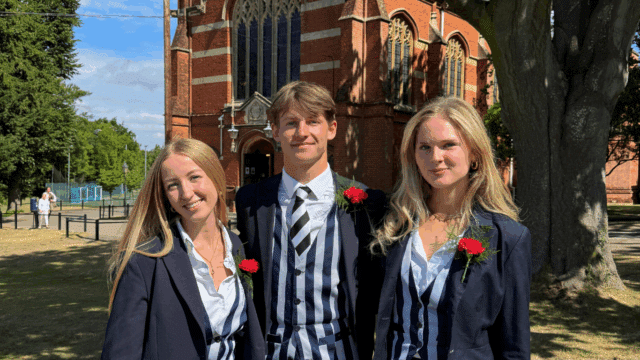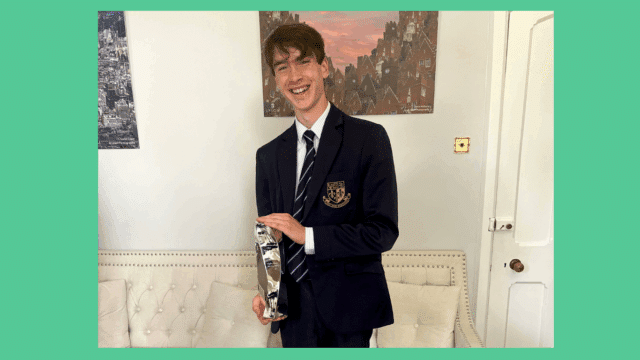Epsom’s new house is home to 24 Year 7 children, and is led by Mr Will Ellis. The new house – called Doudney – takes its name from an inspirational suffragette who was a teacher of English and drama at Epsom College during the Second World War.
The following article is an abridged version of a story recently published in the OE magazine, by College Archivist, Rebecca Worthy.
Violet Mary Toy (née Doudney)
Violet Mary Toy (née Doudney) was born in Leicester in 1889. One of six children, Violet was intelligent and lively but physically weak. She loved creative writing and as a child produced a monthly magazine of her stories and poems for her family to read. Poetry – reading and writing it – became a lifelong interest. At first, Violet was home educated, but she later went to Ashby de la Zouch Girls’ School, passing her final exams in 1907 with 1st Class honours and two distinctions. Her teachers recommended that she apply to Oxford University. Her parents – George, a corn merchant, and Laura – agreed and she entered St Hilda’s Hall (later St Hilda’s College) in 1908 to read English.
At the time women were not recognised as members of the university and could not receive degrees, but they were permitted to attend classes and take exams. It was only in 1920 that Oxford’s female students were finally allowed to take their degrees. Violet experienced one lecturer beginning his lectures with ‘Gentlemen…’ even though women were in attendance. A new statute allowed women such as Violet to matriculate and go through graduation, and she received her BA and MA on the same day in 1921.
In 1909 during a family holiday in Llandudno, Violet and her sisters Laura and Mabel joined the Women’s Social and Political Union (WSPU). The WSPU was founded by suffragette Emmeline Pankhurst in 1903, to push for women’s rights.
“Violet and her sisters were three educated women – well-read and politically aware – who felt it was unfair that half the population were disenfranchised.” – David Toy, Violet’s nephew
“Miss Doudney arrested as suffragette”
The three sisters regularly joined WSPU protest marches from Embankment to the Albert Hall. Violet backed the campaign of breaking the windows of senior politicians to make a stand against the treatment of suffragettes on hunger strikes in prison. She herself smashed a window at the then Home Secretary Reginald McKenna’s home on June 28, 1912. She was arrested immediately.
The next day her parents received a telegram: “Miss Doudney arrested as suffragette”. The magistrate wanted to hear Violet apologise. however she replied: “‘I am not sorry. On the contrary, as an Englishwoman, I am proud to stand here today.” Following those words, the Magistrate sentenced Violet to two months of hard labour.
David Toy, Violet’s nephew, said: “One thing I particularly admire is that she took her action directly to whom she felt to be the protagonist himself, rather than making a general nuisance of herself as many did. I was also curious as to why she waited so late before breaking the window as she clearly intended to be arrested – then it dawned on me that the curtains in the Home Secretary’s dining room would not have been drawn until around 10pm at that time of year. It was a protest only – she clearly didn’t want anyone to be harmed by her action.”
Violet’s parents were very upset that their daughter was jailed and wrote to appeal her sentence and release her from Holloway Prison. The Leicester Daily Post reported on the story and questioned, “Had it been a man, ‘over zeal’ would have been urged in his favour, but as it is a woman, it is charitably described as ‘hysteria’.” Meanwhile, Violet had joined the other women in the prison to go on hunger strike.
Violet’s mother wrote to the Home Secretary promising her daughter would behave upon her release and Violet’s fragile health was emphasised in the hope of her being released early.
However, Violet was horrified to learn what her mother had promised and promptly wrote to the Under Secretary of State: “Sir, I understand that you ordered my release from HM Prison Holloway on account of an undertaking given by my parents that I would do no more militant work. I wish you to understand that no pledge of any kind whatsoever has been even offered to me and that I have given no undertaking whatsoever. Moreover, I am of age and I do not consider myself in any way bound by any pledge given without my knowledge or consent and I certainly intend to take any steps, ‘militant’ or otherwise, which may appear necessary to me to be necessary and justifiable in advancing the cause which I have at heart… if you think you have released me on false pretences and wish me to return to Holloway I am willing to do so.” Violet did not receive a reply but she was honoured with a Hunger Strike medal from Emmeline Pankhurst.
“I’m very proud of what my mother did. She always taught us boys to be angry at any injustices” – John Toy, Violet’s son
A Career in Teaching
Violet’s life continued with two years of secretarial work for the suffragette movement, and in 1914 she became a teacher of English, including drama. She taught in girls’ schools in Yorkshire, Brighton, Blackburn, Southend, Canada and Turkey while continuing to write poetry herself. Her compositions were published in various literary magazines and the Daily Mail.
In Turkey she was introduced to a visiting architect, Sidney Toy. Violet and Sidney married in 1929 and their three boys – John, Mark and Alaric – soon followed. Sidney was a traditional Victorian man and asked Violet not to tell her boys about her early experiences. It wasn’t until the Second World War broke out and she moved them to briefly stay with friends outside of London, that she felt she must tell them about her history as a suffragette – just in case it was the last time she were to see them.
“So that night she told us (we were all three in a double bed) that she wouldn’t be reading to us that night but would tell us about ‘when I was in prison’.” – John Toy
Relocation to Epsom
With the start of the war, Violet and Sidney moved the family permanently out of London to the relative safety of Epsom. Violet became fully engaged in educational debate during the war years and wrote many times in response to letters in The Times Educational Supplement (TES). She also contributed to debates about religious education in schools and about the age of transition between primary and secondary education.
One of the consequences of war was the call for women teachers to replace men who were serving in the armed forces. Violet became an assistant mistress at Epsom College in 1943, teaching English and drama. This was the first time she had taught boys at secondary level in her specialist subjects and it boosted her enthusiasm even more.
“I know she much enjoyed teaching intelligent and interested boys, in spite of the strain of walking up to the school, preparing lessons, marking books and running a household for herself and four males, and shopping etc., amid the restrictions of wartime.” – John Toy
During this time Violet wrote an article for the English Association titled A Defence of Imogen in response to the character of Imogen in Shakespeare’s Cymbeline. It starts: “Women are doomed to be the slaves of fashion; not merely does the vogue alter faces and figures but even the eternal creations of genius suffer, far more than their male counterparts, the vagaries of current fashions of thought and ideals.” The article was sent to CS Lewis for comment and he responded in a most detailed and enthusiastic way.
Following the end of the war, male teachers returned to Epsom College and Violet left to work for a local prep school. Sidney’s first book had been a casualty of the war – few copies were sold and consequently not many architectural commissions came his way. However, he did produce two very successful books about castles in India, as well as a book about castles in Britain and a general one about Europe, that sadly appeared after Violet’s death from phlebitis (the inflammation of veins) in 1952, aged 62.





